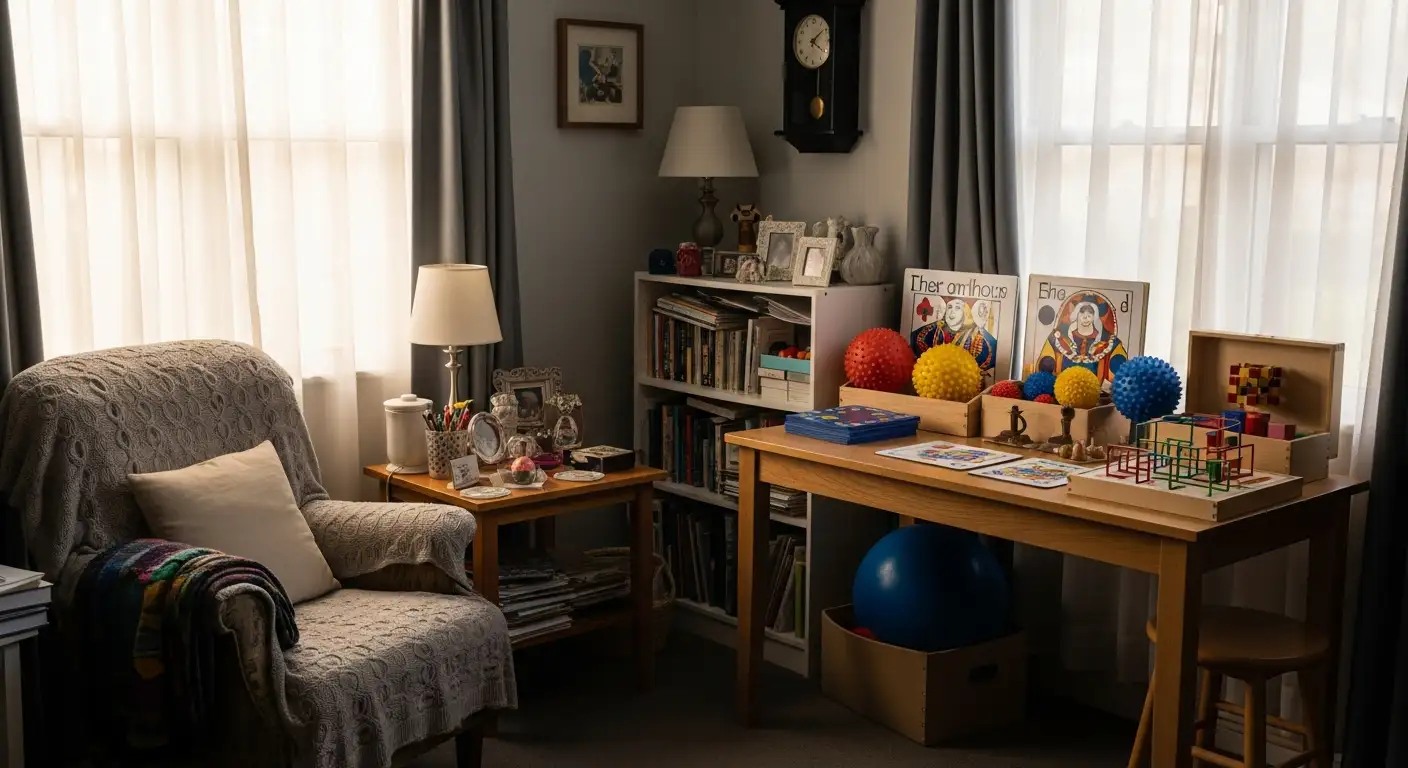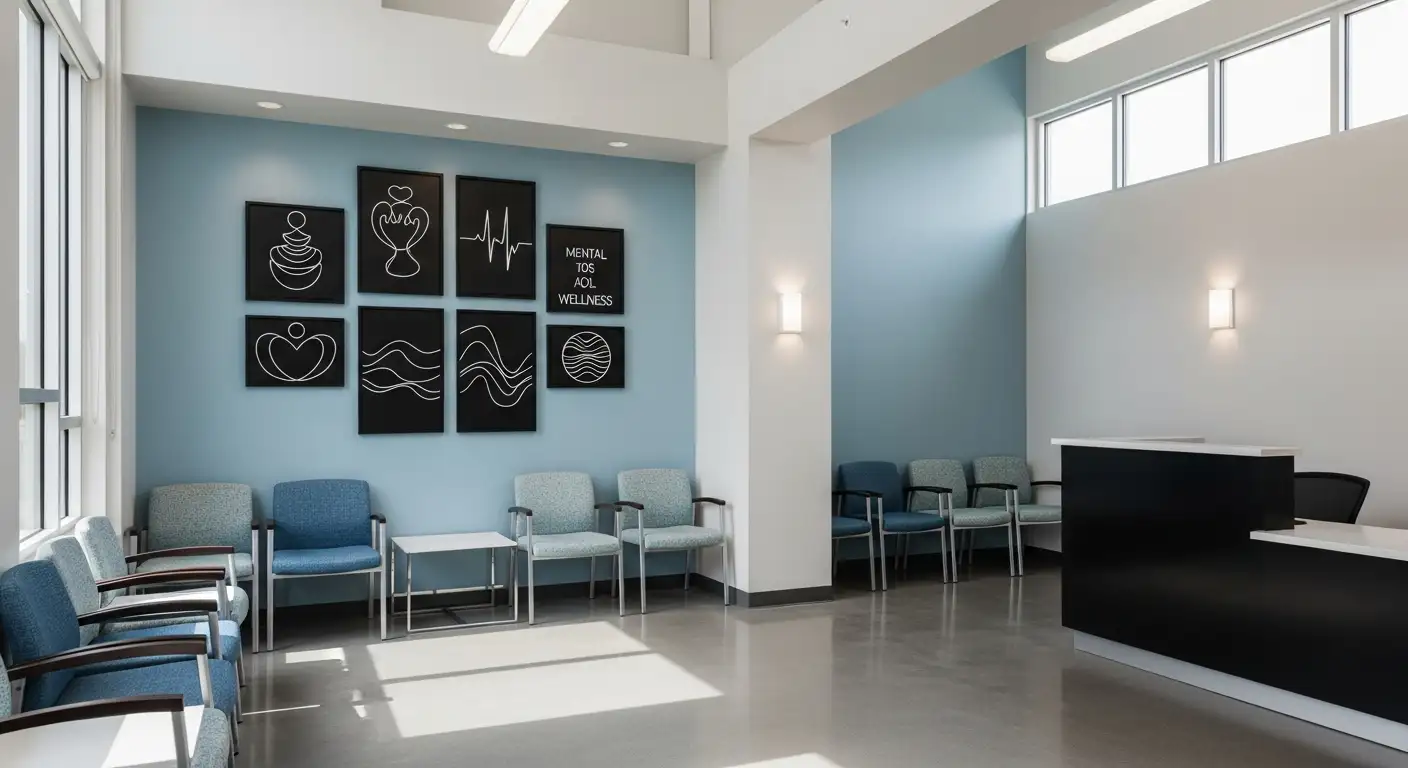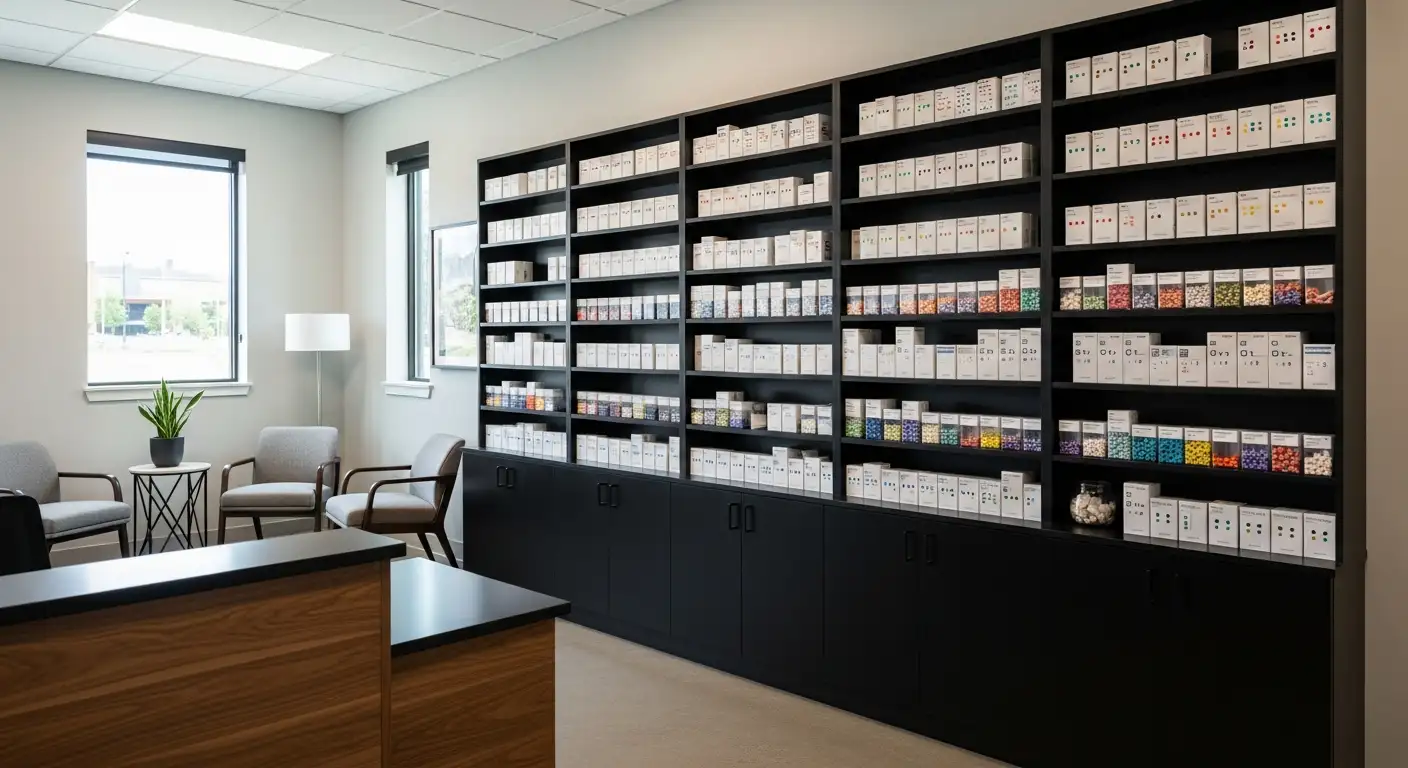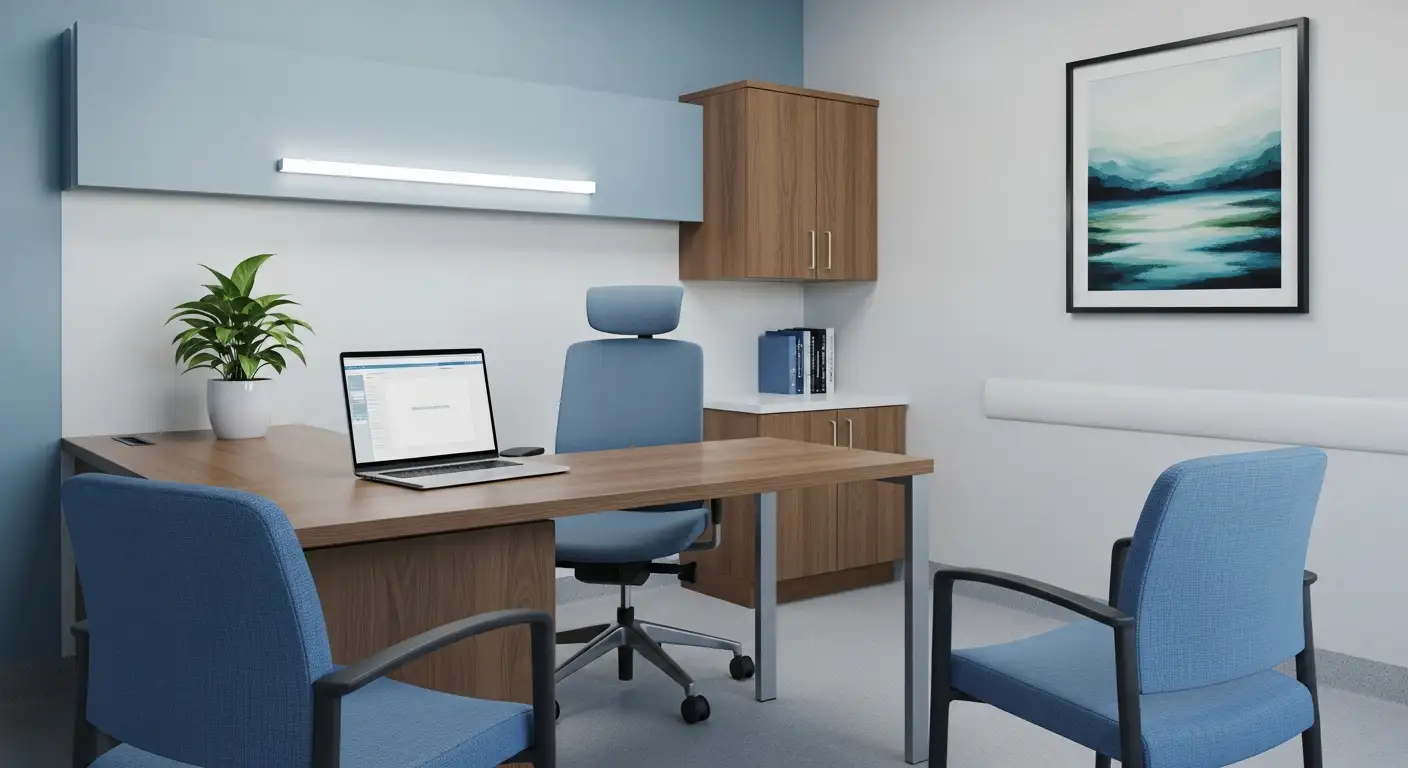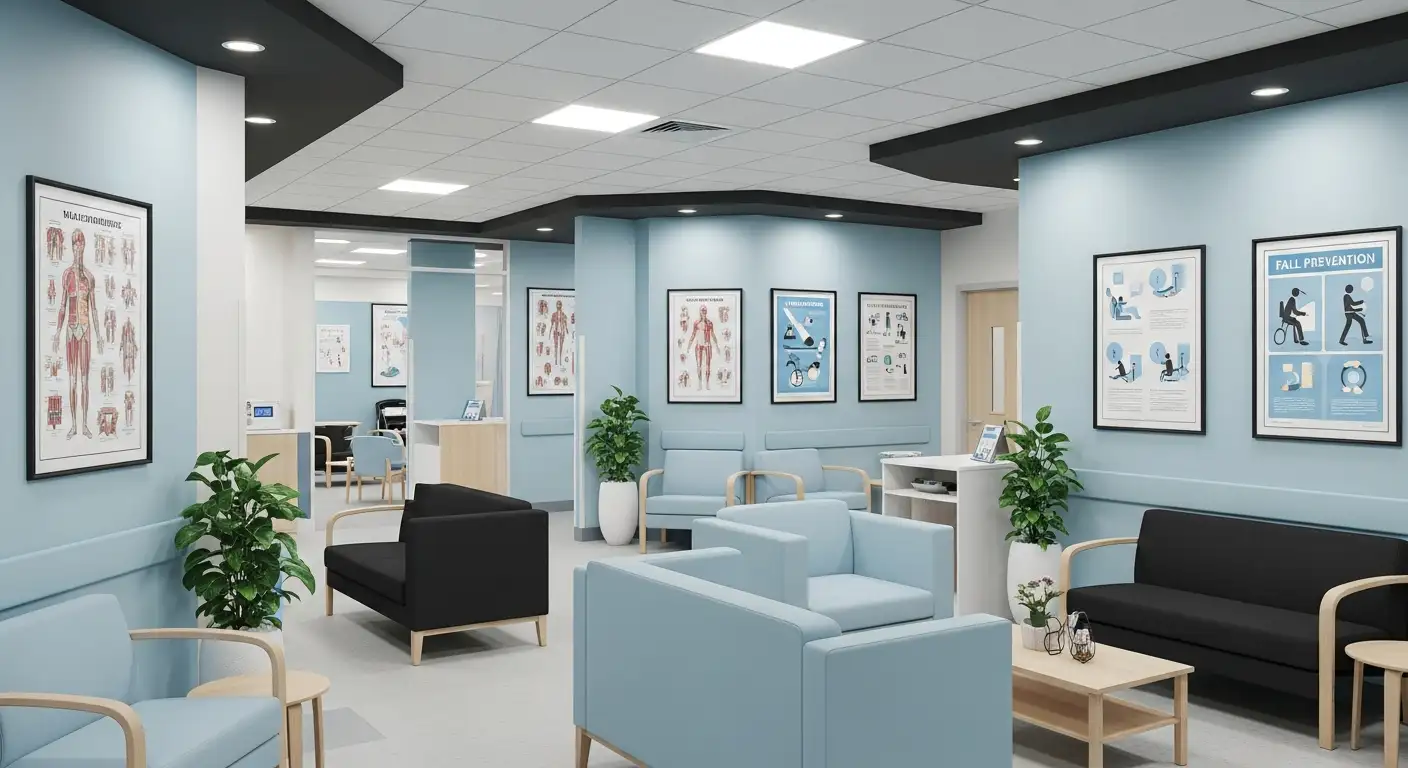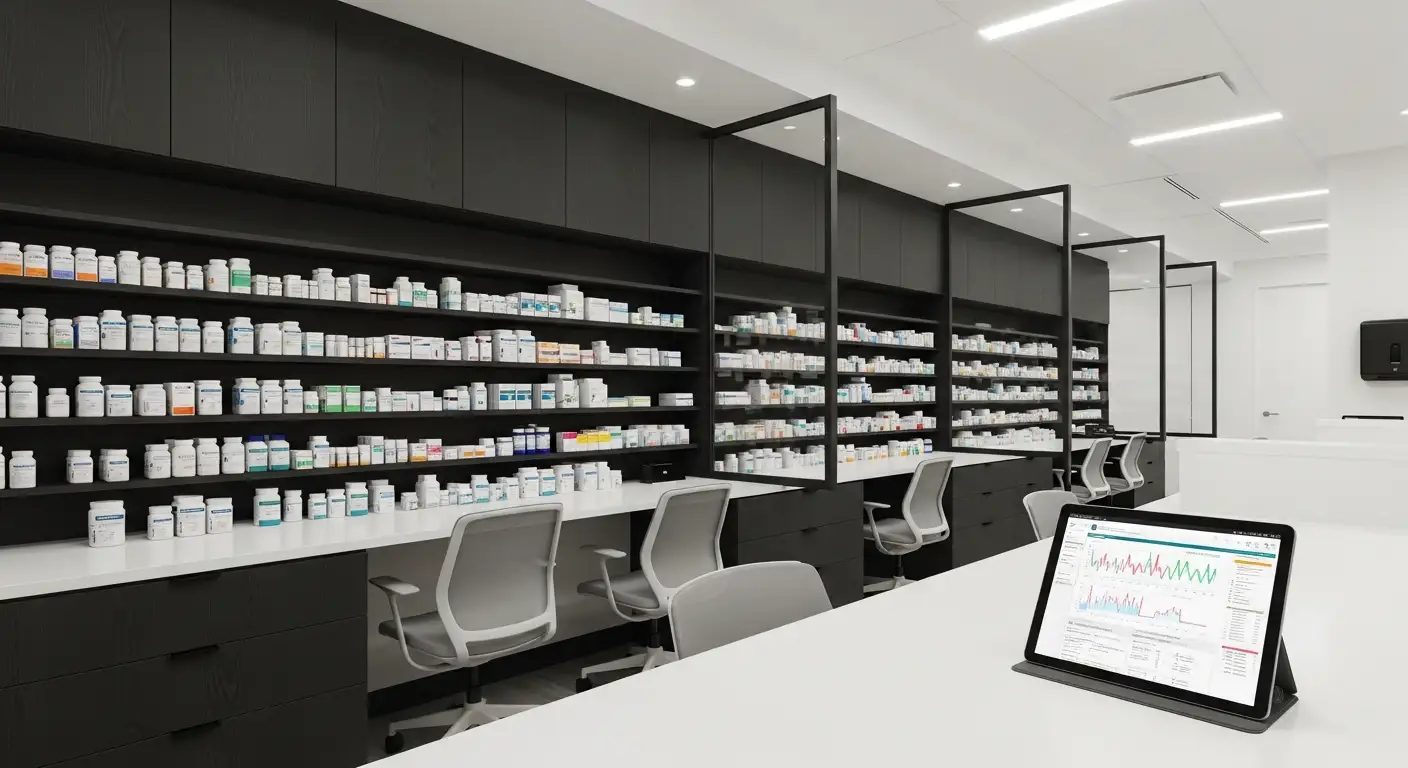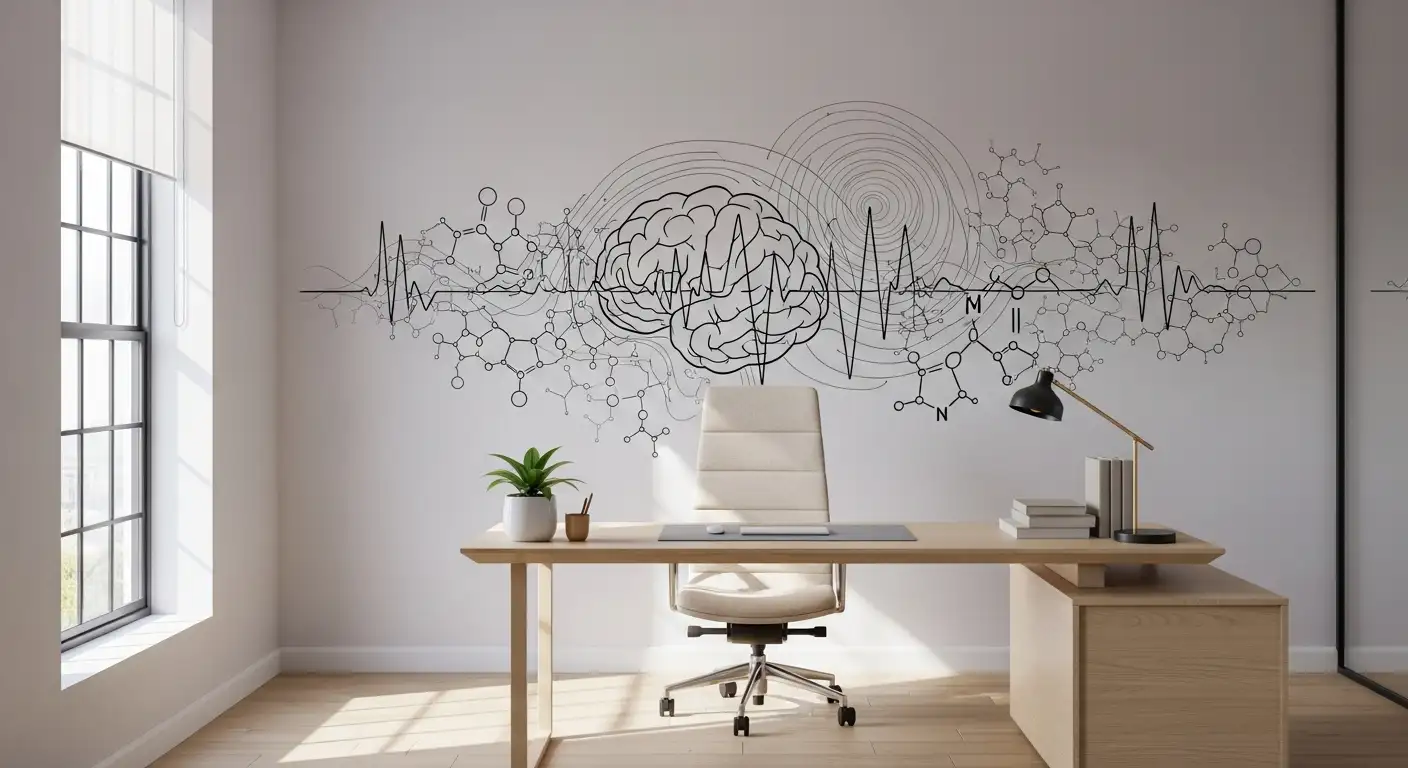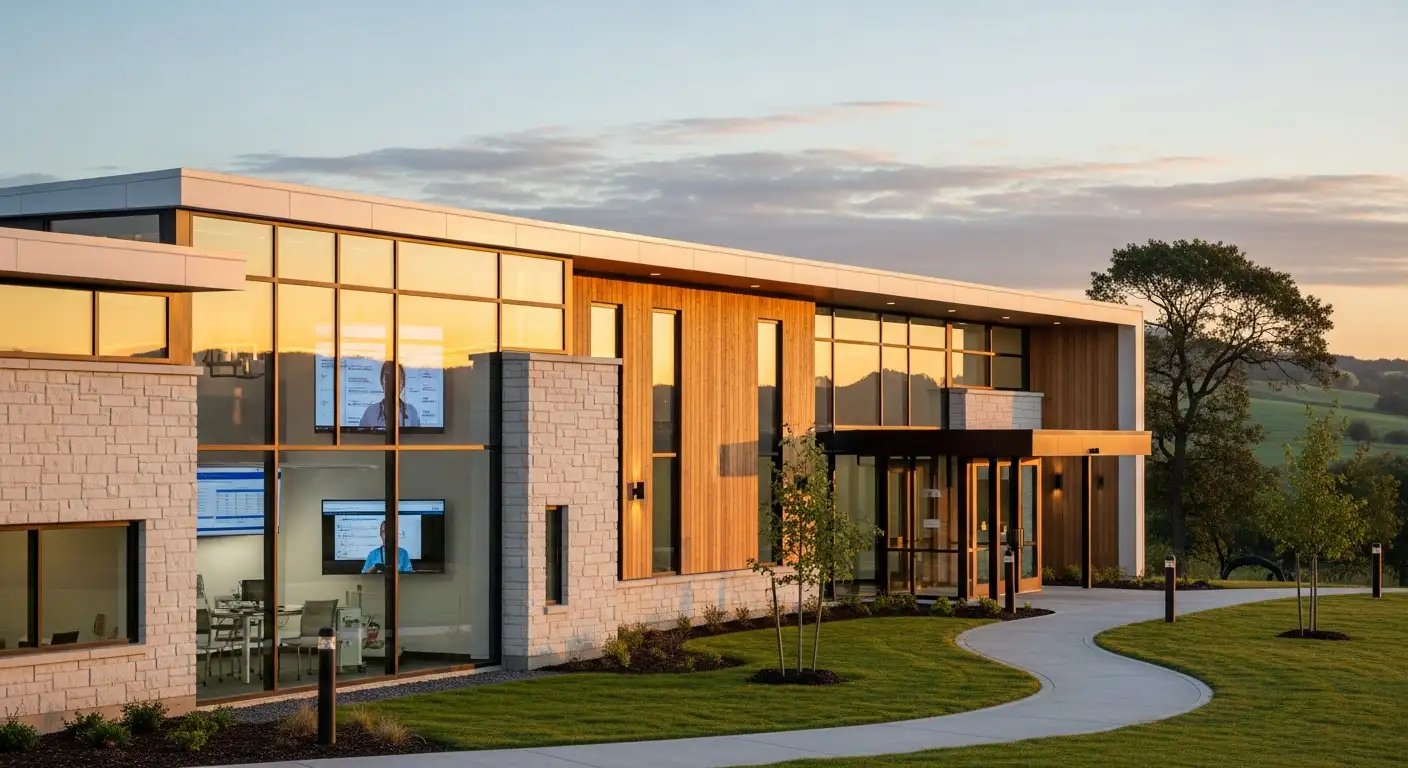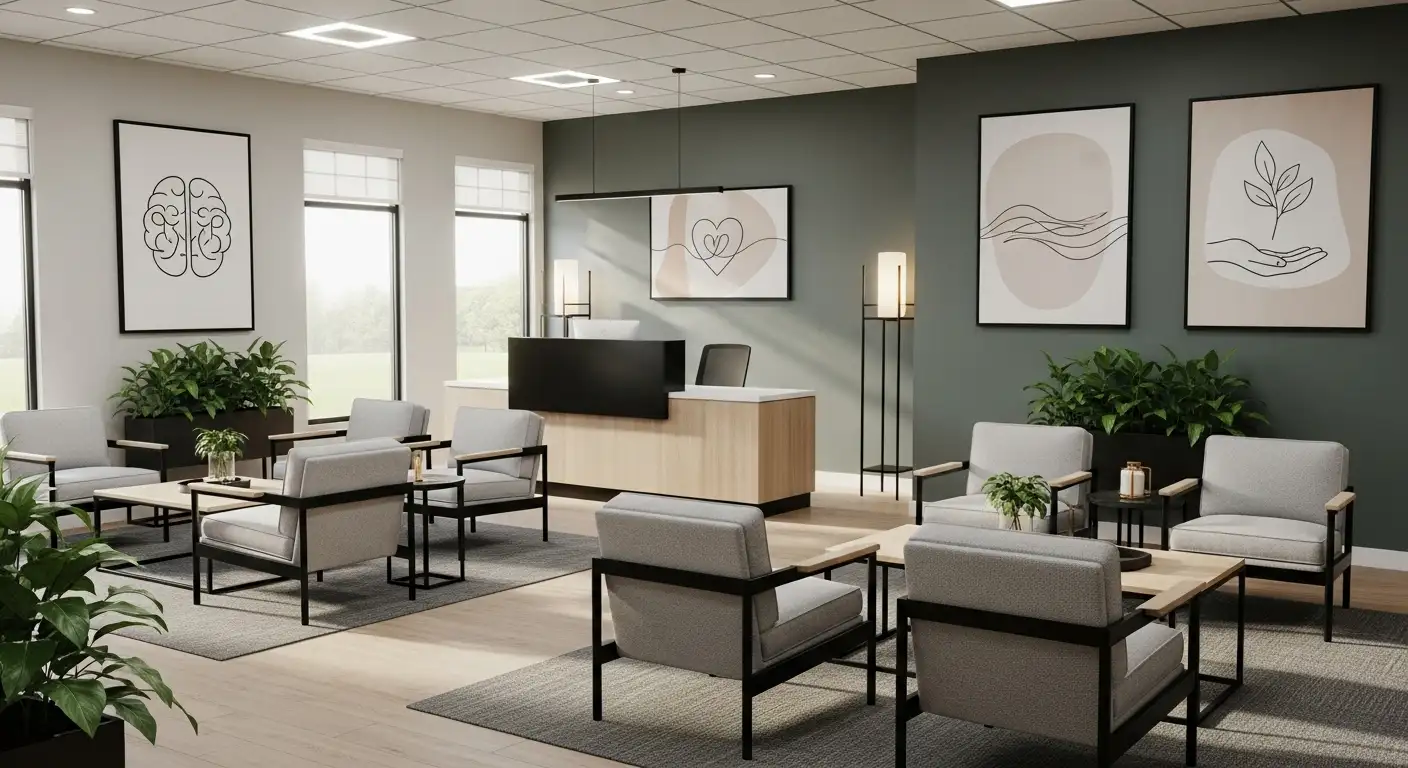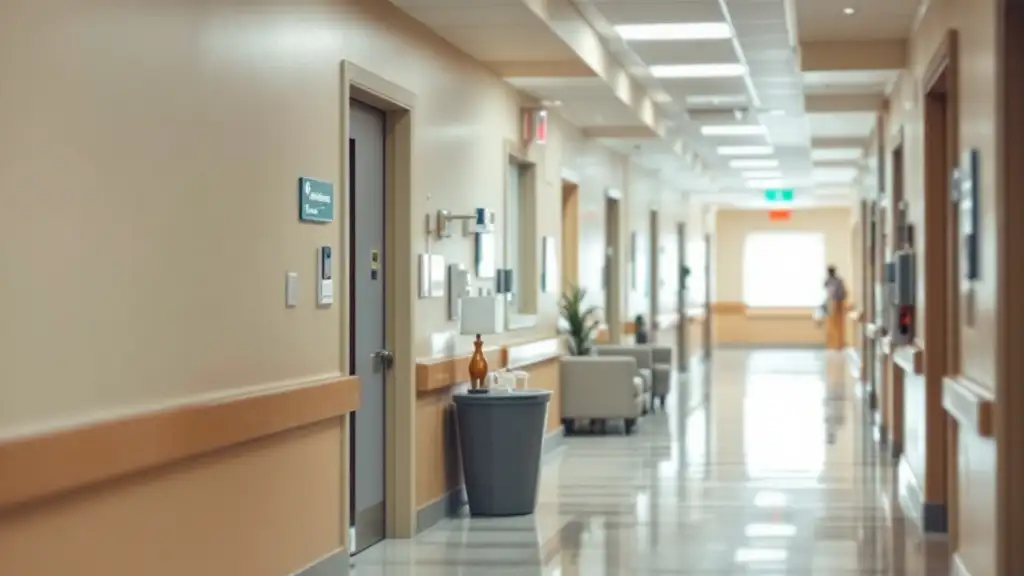Understanding the Complexities of Senior Mental Health
As the senior population grows, addressing mental health challenges unique to older adults has become a critical priority. Combining pharmacological treatments with tailored therapeutic interventions offers new hope for improving mental health outcomes among seniors. This article explores comprehensive strategies integrating medication and psychosocial therapies that effectively tackle the multifaceted needs of seniors coping with mental illness and substance use disorders.
Key Facts on Co-occurring Disorders and Addiction Treatment in Seniors
- Approximately 21.5 million adults in the U.S. have co-occurring mental health and substance use disorders, with seniors being a growing subgroup.
- Diagnosing co-occurring disorders in seniors is challenging due to overlapping symptoms, age-related cognitive changes, and stigma.
- Integrated pharmacological and psychosocial treatment is crucial, combining medication management with therapies like CBT and motivational interviewing.
- Treatment specialists trained in dual diagnoses enable personalized care and coordinate across inpatient, outpatient, and community services.
- Treatment models follow stages: engagement, active treatment (including medication and therapy), and relapse prevention, tailored for seniors.
- Integrated care reduces hospitalizations and improves quality of life, promoting stability, housing, and legal wellbeing.
- Medication-assisted treatment (MAT) uses FDA-approved medications like buprenorphine, methadone, and naltrexone to manage cravings and prevent overdose.
- Combining MAT with psychosocial therapies enhances engagement, reduces relapse, and restores brain chemistry disrupted by addiction.
- MAT expands access in underserved areas, decreases overdose deaths, and offers public health benefits like reduced transmission of infectious diseases.
- A multidisciplinary, integrated approach combining medications, psychosocial support, and holistic therapies is most effective for managing co-occurring disorders.
1. Navigating Co-occurring Disorders in Seniors: An Integrated Treatment Approach

How prevalent are co-occurring mental health and substance use disorders among seniors?
Co-occurring mental health and substance use disorders affect a significant proportion of the senior population. While overall data show that approximately 21.5 million adults in the U.S. have such dual diagnoses, seniors represent a growing subgroup as the population ages. Co-occurring disorders frequently involve conditions like major depressive disorder, anxiety, bipolar disorder, PTSD, ADHD, and psychotic illnesses such as schizophrenia, alongside misuse of substances including alcohol, prescription drugs, and illicit drugs.
What are the challenges in diagnosing co-occurring disorders in older adults?
Diagnosing dual diagnoses in seniors is particularly challenging due to overlapping symptoms between mental illnesses, substance use effects, and age-related cognitive changes. For instance, withdrawal or intoxication can mimic or mask psychiatric symptoms, making it difficult to distinguish primary disorders without extended periods of abstinence or stabilization. Moreover, seniors may underreport symptoms or substance use due to stigma or cognitive impairment.
Why is integrated pharmacological and psychosocial treatment important for seniors with co-occurring disorders?
Integrated treatment that combines medication management with psychosocial therapy is essential in addressing the complex needs of seniors with dual diagnoses. Pharmacotherapy targets both psychiatric symptoms and substance use disorders, often requiring adjustments for age-related pharmacokinetic changes. Psychosocial interventions such as cognitive-behavioral therapy (CBT), motivational interviewing, and family counseling enhance engagement, retention, and relapse prevention.
How do treatment specialists trained in managing dual diagnoses contribute to care for seniors?
Integrated treatment specialists possess advanced expertise in psychopathology, comprehensive assessment, and evidence-based intervention for both mental illnesses and substance use disorders. Their multidisciplinary training enables personalized treatment planning that accounts for the physiological and psychosocial nuances of older adults. Specialists coordinate seamless care delivery, bridging gaps between inpatient, outpatient, and community services to optimize outcomes.
What are the stages of treatment models adapted for senior populations?
Treatment for co-occurring disorders typically follows a stage-wise approach, each tailored to seniors’ unique needs:
- Engagement and Motivation Stage: Utilizing motivational interventions to establish trust and identify personal recovery goals.
- Active Treatment Stage: Applying cognitive-behavioral counseling and pharmacological regimens to manage symptoms and encourage abstinence.
- Relapse Prevention Stage: Employing continued psychosocial support and monitoring to maintain progress and address triggers.
These stages are supported through individual, group, family, and self-help formats ensuring a supportive network.
How effective is integrated care in reducing hospitalizations and improving quality of life for seniors?
Research supports that integrated treatment significantly reduces substance use, psychiatric symptoms, and hospitalization rates among seniors with co-occurring disorders. It also promotes better housing stability, fewer legal issues, and enhanced quality of life. In addition, integrated care has proven cost-effective by decreasing high-risk health complications and emergency care utilization. For seniors, such approaches provide holistic, person-centered care that addresses both mental health and substance misuse simultaneously, improving long-term outcomes.
2. Optimizing Medication-Assisted Treatment and Therapy Tailored for Senior Patients

What is the role of medication-assisted treatment (MAT) in senior addiction recovery?
Medication-assisted treatment (MAT) serves a vital role in addressing substance use disorders (SUD) among seniors, particularly given the complexity that often accompanies aging. Older adults with SUD frequently face compounded challenges such as multiple chronic health conditions and polypharmacy, which complicate treatment strategies. MAT, especially with medications like buprenorphine for opioid use disorder (OUD), stands as the most effective treatment option. It helps reduce the risk of overdose and relapse, critical concerns in this population where early discontinuation can worsen outcomes.
MAT not only manages withdrawal symptoms and cravings but also supports physiological stabilization, enabling seniors to engage more fully in behavioral therapies. Given the increased risk of mortality associated with untreated substance use in older adults, MAT is often prioritized as a foundation for recovery.
How does combining MAT with cognitive-behavioral therapy and motivational interviewing benefit seniors?
Combining MAT with psychosocial interventions provides a comprehensive approach tailored to the unique needs of older adults. Cognitive-behavioral therapy (CBT) assists seniors in identifying and managing thoughts and behaviors that trigger substance use, enhancing coping skills and promoting sustained abstinence.
Motivational interviewing (MI) plays a pivotal role in the persuasion stage of recovery by helping seniors identify personalized goals and fostering intrinsic motivation. This approach is particularly beneficial in overcoming ambivalence about change, which can be pronounced in older populations due to stigma or long-established habits.
When integrated with MAT, CBT and MI improve treatment engagement and retention—two determinants strongly linked to better recovery outcomes. Evidence indicates that psychosocial therapies, although sometimes showing limited added benefit over MAT alone, contribute significantly to reducing discontinuation rates, thereby helping sustain medication adherence and optimizing benefits.
How are treatment resistance and comorbidities addressed in older adults?
Treatment resistance is a common challenge among seniors due to chronicity of substance use and co-occurring mental health disorders such as depression, anxiety, and ADHD. Approximately 23% of individuals with SUD across all age groups also present with ADHD, and this comorbidity can complicate treatment through symptom overlap and increased vulnerability.
In older adults, mental illness often manifests with overlapping symptoms that complicate diagnosis, demanding extended periods of abstinence to clarify primary psychiatric conditions. Integrated care models that synchronize pharmacological and psychosocial treatments are essential. These models involve carefully staged interventions—utilizing motivational techniques early on and CBT during active treatment and relapse prevention stages.
Furthermore, comorbid physical health conditions common in seniors—such as cardiovascular disease and diabetes—interact with mental health and substance use disorders, further complicating treatment. Adjunctive therapies including nutraceuticals, lifestyle changes, and mind-body approaches enhance resilience and can mitigate treatment resistance.
What adjunctive therapies can support recovery outcomes in seniors?
Adjunctive interventions expand beyond conventional pharmacotherapy to include lifestyle modifications and mind-body therapies, proven to benefit mental health and substance use recovery in older populations. These interventions encompass physical activity, dietary improvements, smoking cessation, yoga, mindfulness, and other holistic strategies that improve quality of life with minimal risk.
Incorporation of these practices addresses multiple domains: physical well-being, psychological stress, cognitive impairment, and social isolation, all of which critically influence treatment adherence and recovery success. Tailored lifestyle interventions complement MAT and psychotherapy by reducing relapse triggers and enhancing mental health stability.
Why is a multidisciplinary, collaborative care model essential for seniors?
Older adults with co-occurring substance use and mental health disorders benefit enormously from a collaborative care approach involving multidisciplinary teams. These teams typically include primary care providers, psychiatrists, addiction specialists, social workers, and integrative medicine practitioners.
Such integration fosters comprehensive assessment, personalized treatment planning, and continuous monitoring, ensuring that the complex needs of seniors are met holistically. Collaborative care models facilitate better communication across providers, improve treatment adherence, and result in optimized outcomes through shared decision-making and coordinated service delivery.
This approach also enables addressing social determinants of health, such as social isolation and housing insecurity, which disproportionately affect elderly patients. By integrating behavioral health with social services and community resources, clinicians can better support sustained recovery.
How can treatment adherence and retention be improved in seniors with co-occurring disorders?
Ensuring consistent engagement in treatment is a critical challenge for seniors dealing with mental health and substance use disorders. Data show that combining MAT with psychosocial therapies reduces medication discontinuation, which otherwise heightens relapse risk.
Strategies to improve adherence and retention include regular follow-ups, patient education emphasizing the importance of sustained treatment, family involvement, and flexible treatment formats such as individual counseling, group sessions, and telehealth.
Community outreach and lower-threshold programs help seniors overcome barriers like transportation or stigma. Additionally, integrated treatment specialists trained in both psychopathology and SUD provide nuanced care that adapts to evolving needs, thus boosting patients’ commitment to recovery programs.
Ultimately, optimizing treatment adherence and retention requires a patient-centered approach that respects seniors’ preferences, incorporates adjunctive therapies, and leverages collaborative team efforts to deliver adaptive and continuous care.
| Topic | Description | Specialist Role |
|---|---|---|
| MAT in Seniors | Foundation for managing cravings and overdose risk with medications like buprenorphine | Physicians prescribing and monitoring medication |
| Psychosocial Therapies | CBT and motivational interviewing improve engagement and relapse prevention | Therapists delivering evidence-based interventions |
| Treatment Resistance | Addressed through integrated treatment and adjunctive therapies | Integrated treatment specialists coordinating care |
| Adjunctive Therapies | Lifestyle changes and mind-body practices enhance overall recovery | Integrative medicine practitioners supporting holistic health |
| Collaborative Care | Multidisciplinary teams optimize assessment and treatment adherence | Care coordinators and health professionals ensuring comprehensive care |
| Treatment Adherence | Education, flexible therapy formats, and family support improve retention | Social workers and counselors facilitating ongoing engagement |
Comprehensive Treatment Services for Substance Abuse and Addiction
What comprehensive treatment services are available for substance abuse and addiction?
Comprehensive treatment for substance abuse and addiction encompasses a range of medical, psychological, and supportive services designed to address both the immediate and long-term needs of individuals struggling with substance use disorders (SUDs). These services are often integrated to treat co-occurring mental health disorders, recognizing the complex interplay between addiction and other psychiatric conditions.
Medical Detoxification and Medication-Assisted Treatment (MAT)
Medical detoxification is frequently the first step in treating substance use disorders, especially for substances with severe withdrawal symptoms like alcohol and opioids. Detoxification safely manages withdrawal under medical supervision, preparing patients for further treatment.
Medication-Assisted Treatment (MAT) utilizes FDA-approved medications alongside counseling and behavioral therapies to treat substance use disorders effectively:
- Opioid Use Disorder (OUD): Medications such as buprenorphine, methadone, and naltrexone are cornerstones in reducing cravings and overdose mortality. Buprenorphine, in particular, has strong evidence supporting its efficacy.
- Alcohol Use Disorder: Medications including naltrexone and acamprosate can help reduce relapse and support abstinence.
MAT is endorsed as the most effective approach for OUD, with psychosocial support enhancing engagement and retention in treatment.
Individual and Group Therapy
Therapeutic interventions provide behavioral support vital for recovery. These include:
- Cognitive-Behavioral Therapy (CBT): Helps individuals identify and manage thoughts and feelings that trigger substance use.
- Motivational Interviewing: Used throughout treatment stages to enhance motivation and personal recovery goals.
- 12-Step Facilitation Therapy: Encourages involvement in support groups to foster peer relationships and ongoing support.
Group therapy offers peer interaction and shared experiences, while individual therapy allows for personalized attention and targeted interventions.
Behavioral Health Counseling and Integrated Treatment
Given the high prevalence of co-occurring mental health disorders such as depression, anxiety, ADHD, and PTSD among those with substance use disorders, integrated treatment programs are vital. These programs feature:
- Screening for both mental illness and substance use disorders simultaneously.
- Development of comprehensive treatment plans addressing both conditions.
- Delivery of pharmacological and psychosocial services within a coordinated framework.
Integrated treatment specialists are trained in psychopathology and interventions that span both mental health and addiction, optimizing outcomes.
Relapse Prevention and Harm Reduction
Relapse prevention strategies are a crucial component of treatment, focusing on:
- Teaching coping skills to handle cravings and trigger situations.
- Ongoing cognitive-behavioral counseling during active treatment and maintenance phases.
- Providing naloxone to reverse opioid overdoses.
- Encouraging safe practices such as needle exchange programs to reduce transmission risks of HIV and hepatitis.
Harm reduction reduces immediate risks while supporting incremental progress toward recovery.
Support for Specific Populations
Treatment is often tailored to meet the needs of diverse groups:
- Adolescents: Address co-occurring depression and risky behaviors with age-appropriate interventions.
- Pregnant Individuals: Offer specialized prenatal and addiction care prioritizing both mother and child health.
- Minority and Underserved Communities: Emphasize culturally sensitive approaches, reduce stigma, and improve access through community outreach and telehealth.
- Those with Disabilities: Adapt programs for accessibility and concurrent physical or cognitive challenges.
Tailoring care addresses social determinants influencing addiction and recovery, such as housing instability and social inequities.
Role of Medicaid and Community Resources
Medicaid serves as a critical funding source for many treatment services, including medication, therapy, and inpatient care. Community-based organizations, mobile clinics, and support networks complement clinical services and provide outreach to marginalized populations.
Enhancing Treatment Outcomes
Early intervention, continuous care, and comprehensive support systems markedly improve recovery rates. Educational efforts for families and communities foster supportive environments crucial for sustained success. Helpline resources and integrated treatment units, such as the Dual Diagnosis Unit at MetroHealth, exemplify models improving care access and coordination.
Collectively, combining medical, psychological, and social services ensures individuals receive the holistic support necessary for overcoming substance use disorders and improving overall well-being.
Addressing Co-occurring Mental Health and Addiction Issues
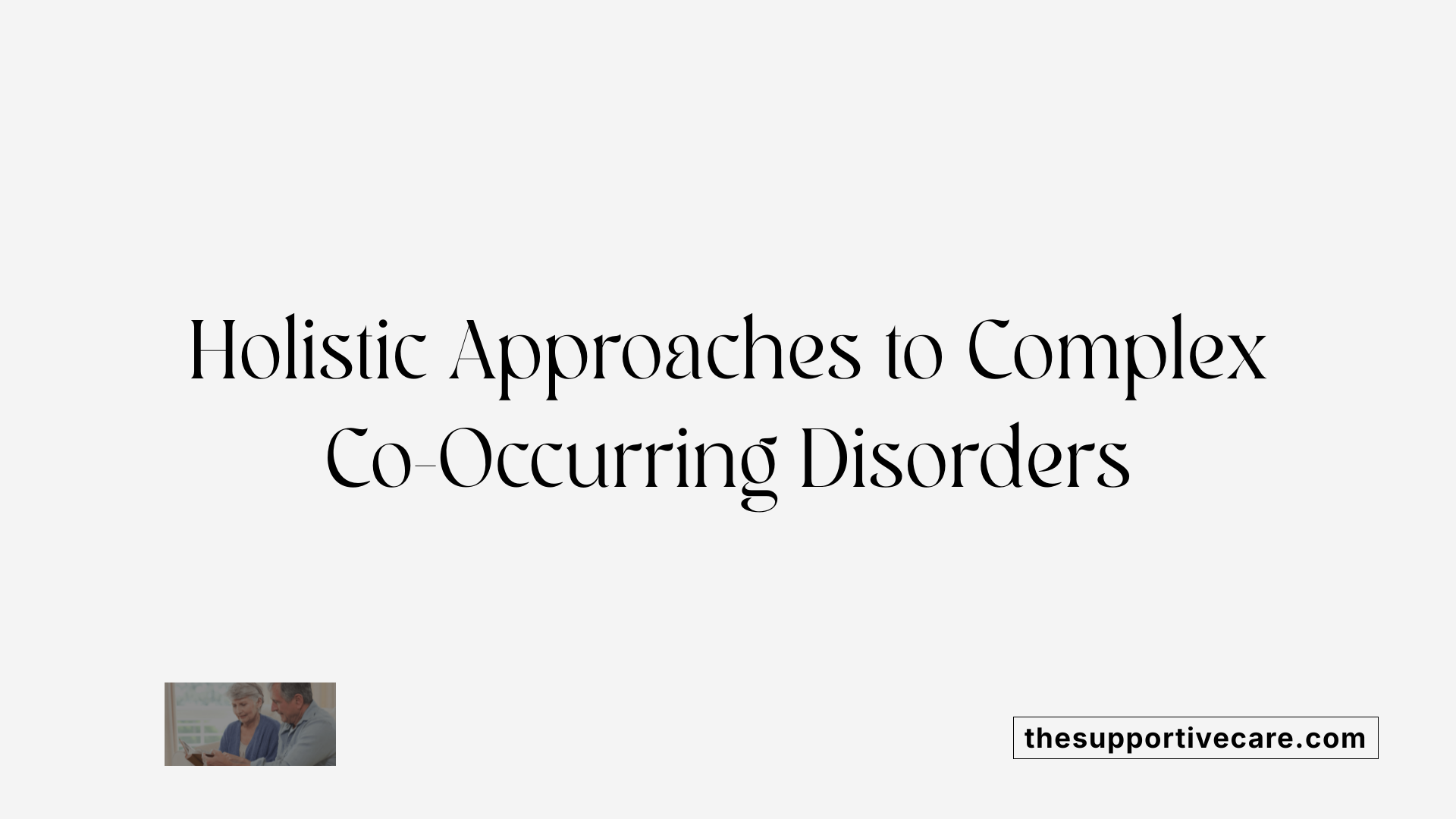
How do treatment programs address co-occurring mental health issues alongside addiction?
Treatment programs tackling co-occurring mental health and substance use disorders use an integrated, stage-wise model designed to meet each individual's unique needs. This approach recognizes the complex interplay between psychiatric disorders—such as depression, anxiety, bipolar disorder, and ADHD—and addiction, ensuring both are treated simultaneously rather than in isolation.
Integrated Treatment and Multidisciplinary Teams
Integrated treatment programs deploy multidisciplinary teams knowledgeable in both mental health and substance use disorders. These teams, often called integrated treatment specialists, include psychiatrists, psychologists, addiction counselors, nurses, social workers, and peer support specialists.
Their expertise spans psychopathology, assessment, and evidence-based intervention strategies, enabling comprehensive evaluations and personalized treatment plans. This collaboration helps address mental illnesses and substance use without fragmented care, improving communication among providers and continuity of care.
Cognitive-Behavioral Therapy (CBT) and Motivational Interviewing (MI)
CBT is a core component in managing co-occurring disorders, used extensively during active treatment and relapse prevention stages. It helps individuals recognize and modify thought patterns and behaviors that trigger substance use and worsen psychiatric symptoms.
Motivational Interviewing is applied across all treatment stages but especially during the persuasion phase to increase readiness for change. MI engages clients by exploring their ambivalence about recovery and identifying personal goals, enhancing motivation for sustained treatment adherence.
Family Therapy and Other Treatment Formats
Family interventions form a vital part of treatment by providing education, improving communication, and fostering supportive environments. Treatment is flexible and often combines multiple formats:
- Individual counseling focusing on the person's specific issues.
- Group therapy facilitating peer support and shared learning.
- Family therapy addressing relational dynamics influencing recovery.
- Self-help groups complementing formal treatment with ongoing social support.
Pharmacological Management
Medications play an essential role, especially in managing psychiatric symptoms and treating substance use disorders. Pharmacotherapy avoids addictive medicines where possible and may include antidepressants, mood stabilizers, and medications for cravings or withdrawal.
For opioid use disorder, medications like buprenorphine are highly effective and serve as a foundation alongside psychosocial interventions. Medication-assisted treatment (MAT) improves retention and reduces relapse risk when combined with counseling and behavioral therapies.
Relapse Prevention and Stage-Wise Care
Treatment is delivered in stages, from engagement and persuasion to active treatment and relapse prevention. Strategies focus on maintaining recovery by managing triggers and developing coping mechanisms.
Relapse prevention often includes ongoing CBT, support groups, and monitoring through case management, helping clients sustain long-term sobriety and mental health stability.
Research and Outcomes
Evidence supports the benefits of integrated treatment, which can reduce substance use, alleviate psychiatric symptoms, lower hospitalization rates, increase housing stability, and enhance quality of life. The comprehensive, coordinated care model also adapts well across diverse settings and populations, including underserved communities.
By coordinating pharmacological and psychosocial treatments delivered through multidisciplinary teams and various therapy formats, programs effectively support individuals navigating the complex challenges of dual diagnoses.
Effective Therapeutic Approaches in Addiction and Mental Health Treatment
What forms of therapy are effective in treating addiction and mental health challenges?
Treatment of co-occurring addiction and mental health disorders is most successful when it combines multiple evidence-based approaches tailored to individual needs. This integration addresses the complexity of symptoms and supports sustained recovery.
Cognitive-Behavioral Therapy (CBT)
CBT is widely used to treat both substance use disorders and mental health conditions like depression, anxiety, and ADHD. Through CBT, patients learn to identify and change harmful thought patterns and behaviors that contribute to their symptoms. This therapy assists in relapse prevention by equipping individuals with coping skills to manage triggers and cravings effectively.
Motivational Interviewing (MI)
MI is a client-centered counseling approach that helps resolve ambivalence about changing addictive behaviors. It is particularly useful during the early persuasion stage of treatment. By fostering intrinsic motivation, MI encourages patients to set personal goals toward recovery and commitment to treatment.
Family Therapy
Recognizing the role of social support, family therapy involves loved ones in the treatment process to build a supportive recovery environment. This approach can improve communication, reduce conflict, and strengthen relationships, which are essential in managing co-occurring disorders.
Dialectical Behavior Therapy (DBT)
DBT is designed to enhance emotional regulation, mindfulness, and distress tolerance. It is effective for patients with borderline personality disorder or those who struggle with intense emotions and self-harm behaviors. This therapy complements addiction treatment by addressing emotional triggers that may lead to substance use.
Pharmacotherapy
Medications are a cornerstone in treating substance use disorders, especially opioid use disorder (OUD). Medications like buprenorphine, methadone, and naltrexone reduce withdrawal symptoms and cravings, improving treatment retention. Pharmacological treatments also include antidepressants for depression and anxiety, often used alongside psychosocial therapies. Evidence supports that medication for opioid use disorder (MOUD) combined with psychosocial support yields the best outcomes.
Holistic and Peer Support Approaches
Complementary therapies such as mindfulness, art therapy, yoga, and mind-body interventions have beneficial effects on mental health. These low-risk, cost-effective interventions enhance well-being and reduce stress. Peer support groups like Alcoholics Anonymous (AA) provide social connection and shared experiences pivotal for long-term recovery.
Combining Treatments for Better Outcomes
Integrated treatment specialists create personalized plans combining therapies and medications tailored to each individual's stage of recovery. This stage-wise approach includes motivational interventions during engagement, CBT during active treatment, and relapse prevention counseling. Providing services in multiple formats—individual, group, family, and self-help—increases accessibility and effectiveness.
By integrating pharmacological, psychosocial, behavioral, and holistic therapies, treatment programs improve psychiatric symptoms, substance use outcomes, and quality of life. Such comprehensive care also reduces hospitalization, arrests, and housing instability among individuals with co-occurring disorders.
| Therapeutic Approach | Primary Focus | Role in Co-Occurring Disorders Treatment |
|---|---|---|
| Cognitive-Behavioral Therapy | Modify harmful thoughts and behaviors | Manage triggers, reduce relapse risk |
| Motivational Interviewing | Resolve ambivalence, enhance motivation | Facilitate engagement and commitment at treatment outset |
| Family Therapy | Strengthen social support and communication | Improve family dynamics and recovery environment |
| Dialectical Behavior Therapy | Emotional regulation and mindfulness | Address intense emotions and reduce self-harm |
| Pharmacotherapy | Medication-assisted reduction in cravings | Essential for opioid use disorder and management of psychiatric symptoms |
| Holistic & Peer Support | Mind-body well-being and social connection | Complement clinical care, promote sustained recovery |
The Critical Role of Medication-Assisted Treatment (MAT) in Recovery

What role does medication-assisted treatment (MAT) play in addiction recovery?
Medication-assisted treatment (MAT) is a cornerstone of effective addiction recovery, combining FDA-approved medications with counseling and behavioral therapies to address substance use disorders holistically. This approach is particularly valuable because it targets the underlying neurochemical imbalances caused by addiction, helping to normalize brain chemistry and reduce the physiological cravings that often lead to relapse.
FDA-approved medications for addiction
MAT utilizes several medications approved by the Food and Drug Administration (FDA) to treat addiction, particularly opioid use disorder (OUD). The most commonly used include:
- Methadone: A long-acting opioid agonist that reduces withdrawal symptoms and cravings without producing the euphoric high associated with opioid misuse.
- Buprenorphine: A partial opioid agonist that similarly alleviates cravings and withdrawal while offering a lower risk of overdose.
- Naltrexone: An opioid antagonist that blocks the effects of opioids, deterring relapse by inhibiting the drug's euphoric effects.
These medications are frequently administered alongside psychosocial interventions to provide comprehensive care.
Combining MAT with counseling and behavioral therapies
While medications in MAT address the neurochemical aspects of addiction, counseling and behavioral therapies target psychological and social factors. Techniques such as cognitive-behavioral therapy (CBT), motivational interviewing, and 12-step facilitation are commonly integrated with MAT.
These therapies help individuals develop coping strategies, manage triggers, and build supportive social networks crucial for maintaining long-term recovery. Research shows that concurrent psychosocial treatment improves patient engagement and retention in MAT programs, which is critical for sustained success.
Impact of MAT on brain chemistry and relapse prevention
Addiction fundamentally alters brain circuits related to reward, motivation, and self-control. MAT medications help restore balance by:
- Reducing drug cravings and withdrawal symptoms
- Stabilizing brain chemistry disrupted by substance use
- Preventing relapse by blocking euphoria or providing substitute stimulation
This biological support allows patients to focus on recovery efforts without the overwhelming physiological burdens that often undermine treatment adherence.
MAT’s role in increasing treatment access and reducing overdose
MAT expands access to life-saving treatment, especially in underserved or rural communities where specialty addiction services are limited. Because many MAT providers operate in outpatient or primary care settings, patients can receive treatment in less stigmatizing and more accessible environments.
Importantly, MAT has been shown to reduce overdose deaths substantially. For example, buprenorphine maintenance treatment decreases opioid overdose mortality by providing safer alternatives and stabilizing patients before full recovery.
Public health benefits of MAT
Beyond individual recovery, MAT offers several public health advantages:
- Reduction in criminal activity: Treating addiction decreases behaviors related to illegal drug use and its consequences.
- Lower transmission of infectious diseases: Effective treatment reduces risky behaviors, such as injection drug use that contribute to HIV and hepatitis spread.
- Healthcare cost savings: MAT lowers emergency room visits, hospitalizations, and other costly healthcare utilization.
These benefits highlight MAT’s role as an essential component of wider addiction control and health promotion strategies.
Importance of MAT in underserved areas
Underserved populations, including those in rural regions or marginalized urban communities, face significant barriers to addiction treatment. MAT's availability in various clinical settings and its adaptability to integrated care models increase treatment accessibility for these groups.
Medicaid funding and community health programs often support MAT, enabling broader reach and continuity of care. As substance use disorders disproportionately affect these populations, MAT plays a critical role in closing treatment gaps and improving recovery rates.
Overall, medication-assisted treatment integrates pharmacological and psychosocial support to offer evidence-based, life-saving addiction care. Its multifaceted benefits at individual, community, and public health levels make it indispensable in modern addiction recovery frameworks.
Enhancing Senior Care Through Integrated Pharmacology and Therapy
Mental health challenges and substance use disorders among seniors require comprehensive, integrated approaches combining pharmacological treatments with psychosocial and adjunctive therapies. Evidence increasingly supports multidisciplinary care models tailored to seniors’ unique needs, improving treatment adherence, reducing hospitalizations, and enhancing quality of life. Incorporating medication-assisted treatment with cognitive and behavioral therapies, lifestyle changes, and collaborative care paves the way for healthier aging populations. Continued focus on early intervention, holistic care, and addressing social determinants in treatment planning promises better outcomes for older adults facing mental health and addiction issues.
References
- Treatment for Substance Use Disorder With Co-Occurring ...
- Psychosocial and behavioral therapy in conjunction with ...
- Integrated Treatment for Co-Occurring Disorders
- Co-Occurring Disorders and Other Health Conditions
- An integrative collaborative care model for people with mental ...
- Transforming Mental Health And Addiction Services
- Combined Treatment for Mental Health and Substance Use
- Home | SAMHSA - Substance Abuse and Mental Health ...
- Medications for Substance Use Disorders
- Medication-Assisted Treatment for Opioid Use Disorder in ...


